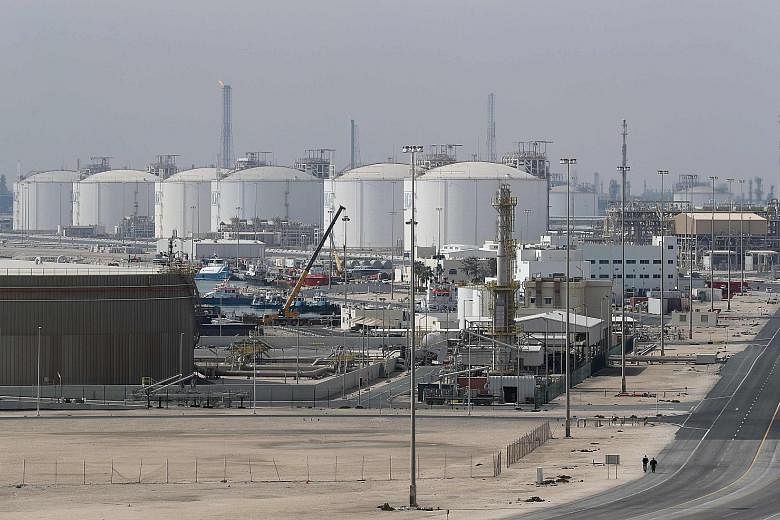KUALA LUMPUR • Opec is not the only decades-old energy hegemony being turned on its head by United States shale.
Liquefied natural gas (LNG) sellers from Qatar to Malaysia that dominated gas sales to Asia for years are facing the prospect of rising American exports.
While fewer than 30 US shipments have landed in Asia, their effect was felt even before they arrived.
LNG trade last year jumped the most in five years, contract lengths were sliced in half in the past decade, and spot prices slumped more than 60 per cent in the past three years.
That means the global LNG titans gathering in Tokyo this week for Gastech are in the midst of the biggest shake-up since the industry was founded in the 1960s.
Just as American crude is increasingly making its way to Asia, the world's biggest oil market, the burgeoning armada of gas shipments from the US and elsewhere are poking holes in the financial system on which the industry's multibillion-dollar plants are funded.
"As US exports ramp up, we're going to see even more flexibility with more people trying to buy and trade volumes," said Mr Chong Zhi Xin, a gas analyst for Wood Mackenzie in Singapore.
"The old models of stable long-term contracts will really have to change. We've already seen the impact of US LNG on contract trends, with more destination flexibility coming into play."
In the 1960s, when projects in Algeria and Alaska started chilling natural gas, the LNG trade was as simple as the industry's engineering was complex.
Energy companies borrowed heavily to develop gas fields and build liquefaction plants, and to pay off the debt, they signed decades-long contracts with electric utilities to buy the fuel at a fraction of the price of oil.
Now, with hydraulic fracturing lowering production costs, US exporters are setting the price of LNG based on natural gas trades at Henry Hub in Louisiana.
They are also eliminating destination restrictions that require ships to arrive at a specific port, which most previous contracts included, meaning traders can buy shipments and flip them to whatever market needs them the most.
"There are more new types of players coming into the market," said Mr Keisuke Sadamori, director of energy markets and security at the International Energy Agency.
"It's no longer the long-term, bilateral, dedicated deal between a certain public utility and exporter, but a more flexible and liquid market."
By 2020, the US could become the world's third-largest exporter, behind Australia and Qatar, with capacity to produce 71 million tons of the fuel a year.
It could pass both those countries by 2035, said Ms Meg Gentle, chief executive of prospective shale gas exporter Tellurian.
US plants will help boost global production capacity to 407 million tons a year by 2020, compared with projected demand of about 274 million tons, according to Bloomberg New Energy Finance.
BLOOMBERG

